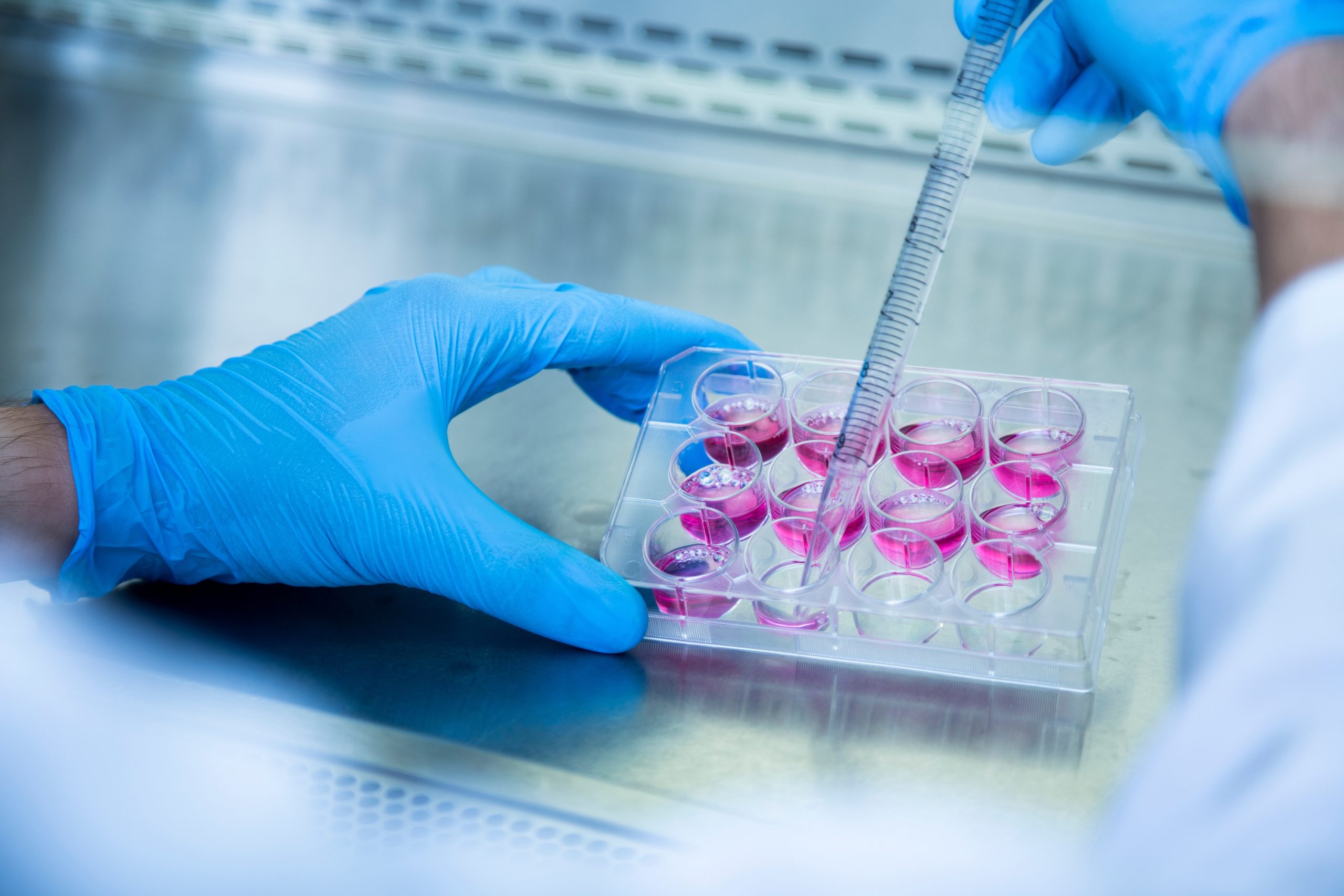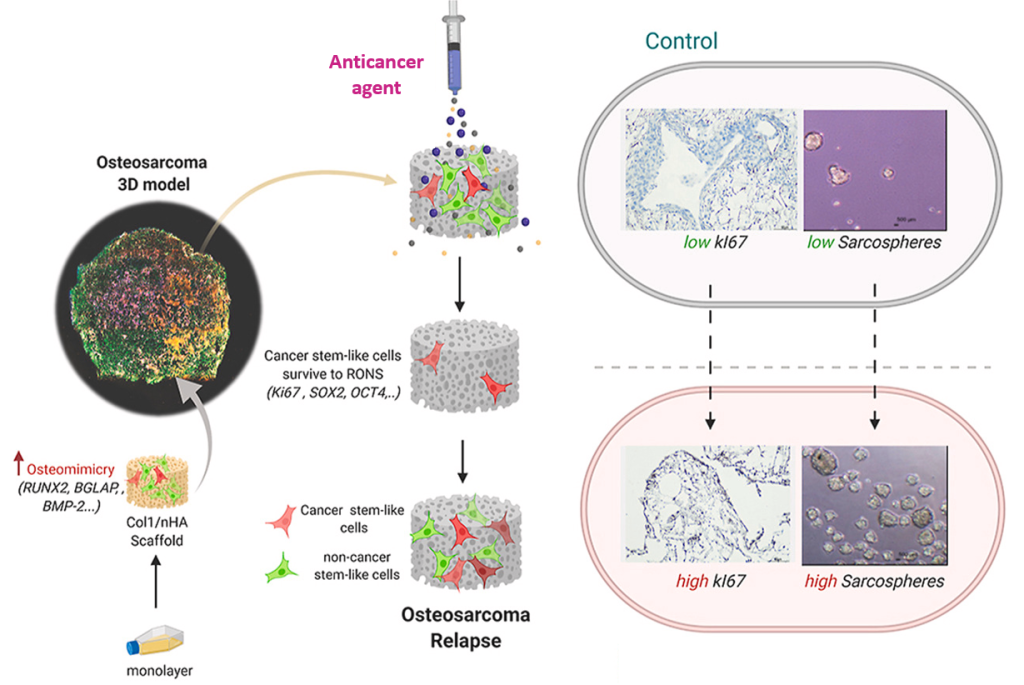
Employing biomaterials to produce in vitro bone tumour models for preclinical research
Bone tumours are a type of cancer with a high mortality rate in children and, although research on innovative therapies is on the rise, most of them fail in the process of clinical translation. This is due to the role of the bone environment, and more specifically of the Extra-Cellular Matrix (ECM), in tumour response to investigational treatments, which conventional in vitro cell cultures do not take into account.
Recently, researchers from the Biomaterials, Biomechanics and Tissue Engineering Group (BBT) of BIOMATDB partner Universitat Politècnica de Catalunya – BarcelonaTech (UPC) have developed biomaterial-based scaffolds composed of the two main components of the bone ECM, collagen type 1 and hydroxyapatite, which were used to develop in vitro 3D cultures of bone cancer cells. By using this 3D culture system, cancer cells presented higher resistance to several tested therapies and showed different types of behaviour that have not been observed in 2D cultures, like increased aggressiveness, metastasis and tumour relapse [1–3].

Figure 1. Bone cancer cells (osteosarcoma) cultured in scaffolds composed by Collagen Type 1 (Col1) and Hydroxyapatite Nanoparticles (nHA) increase genes related with osteomimicry (similarity with normal bone cells) and survival of more aggressive cancer cells (stem-like cells) that are responsible of tumour relapse by cell proliferation (increase of Ki67 marker) and self-renewal (formation of sarcospheres). Figure adapted from [1].
These new in vitro models open the door to more accurate and realistic scenarios of preclinical research without the employment of animal models, which can represent an advance in the clinical translation of new bone cancer therapies.
Author: Miguel Mateu Sanz
References
[2]. Mateu-Sanz M, Ginebra MP, Tornín J, Canal C. Cold atmospheric plasma enhances doxorubicin selectivity in metastasic bone cancer. Free Radic Biol Med. 2022;189:32–41. Available from: https://doi.org/10.1016/j.freeradbiomed.2022.07.007
[3]. Tornín J, Mateu-Sanz M, Rey V, Murillo D, Huergo C, Gallego B, et al. Cold plasma and inhibition of STAT3 selectively target tumorigenicity in osteosarcoma. Redox Biol. 2023;62. Available from: https://www.sciencedirect.com/science/article/pii/S2213231723000861